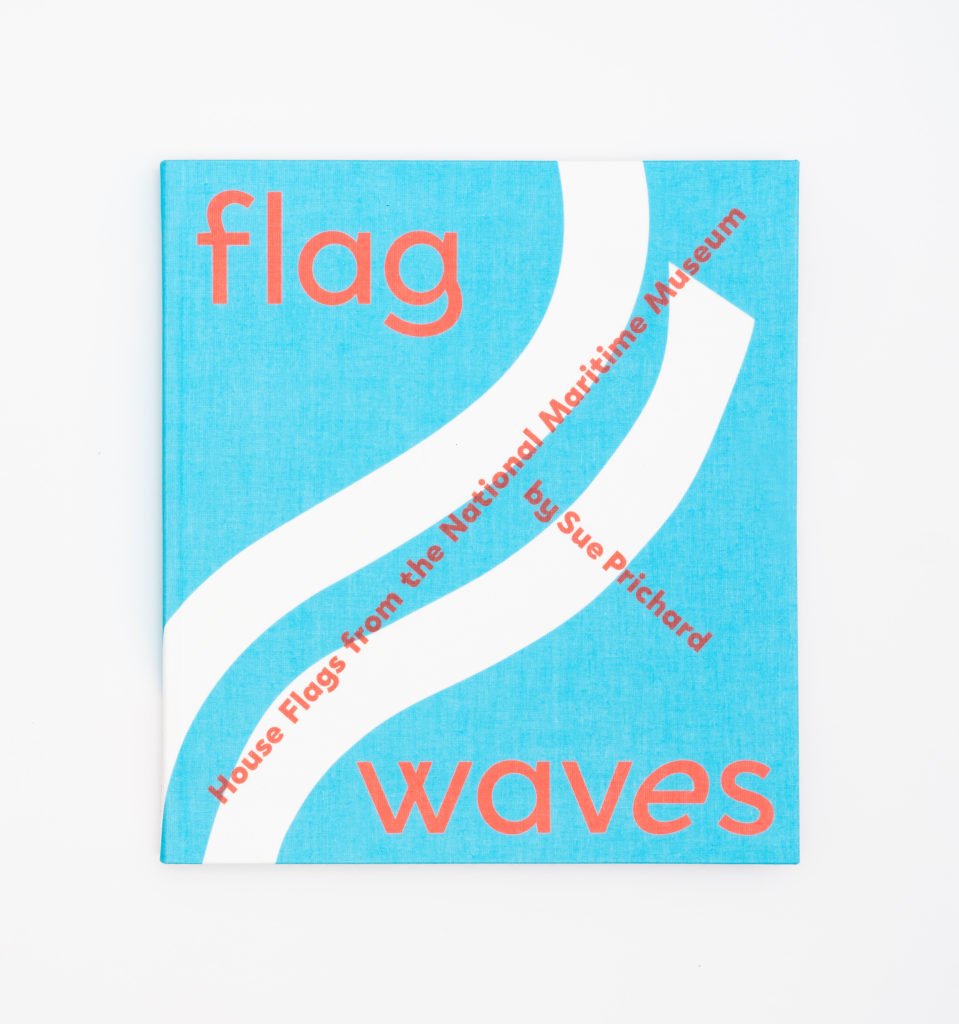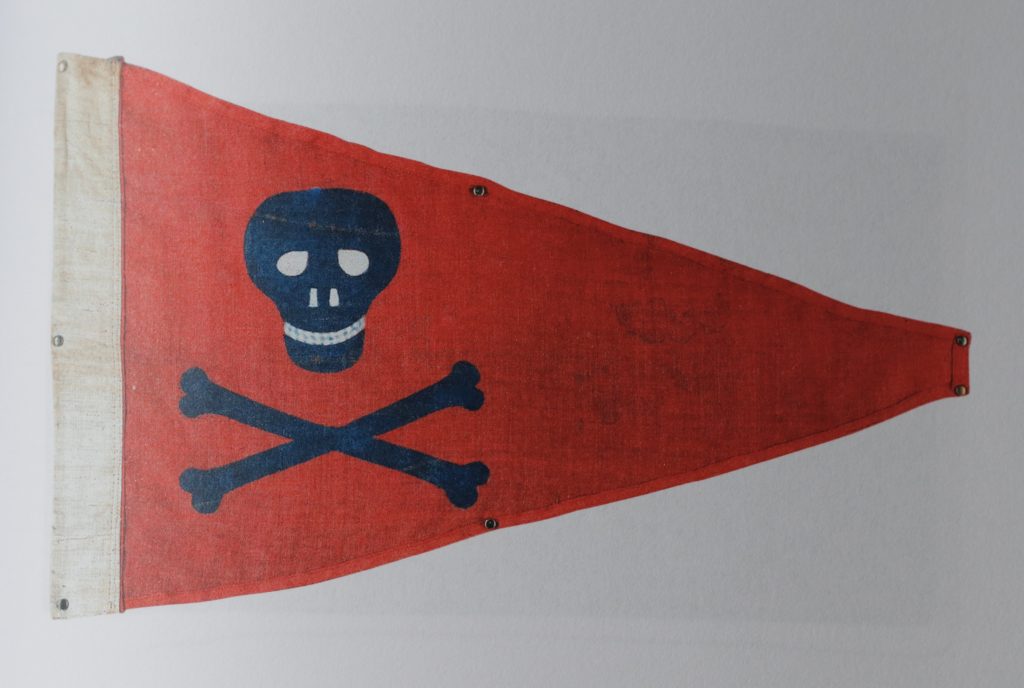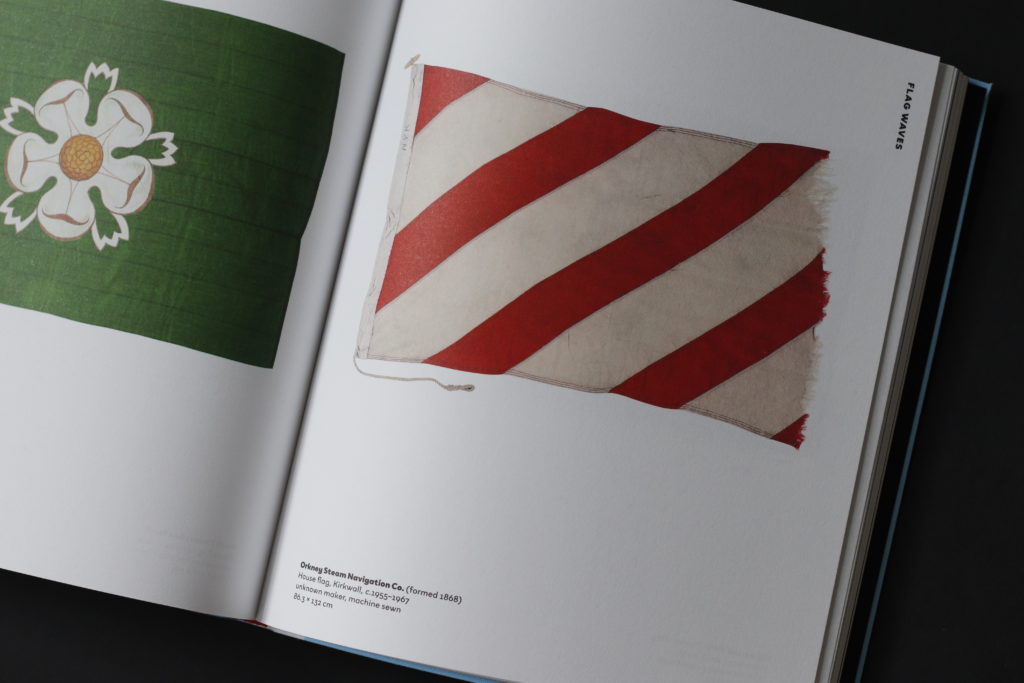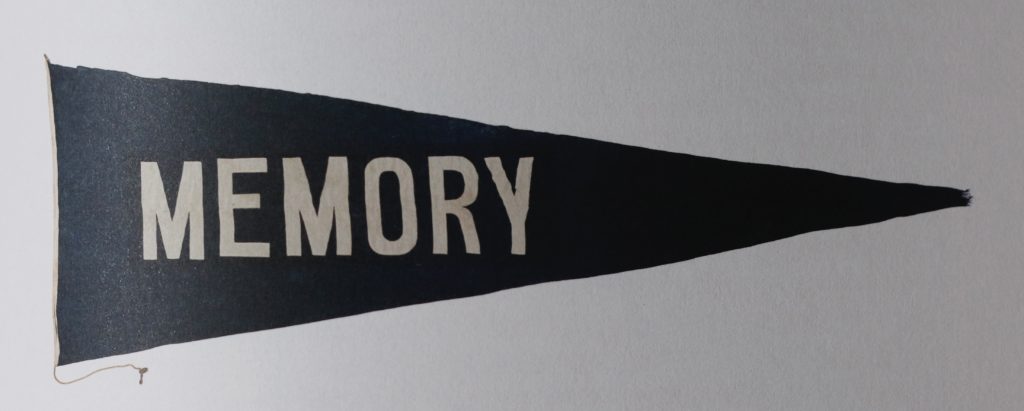‘Flag Waves: House Flags from the National Maritime Museum’, Sue Prichard’s image-led examination of the design history of maritime flags, is published by Four Corner Books. Roy Wilkinson reviews.

As author and National Maritime Museum curator Sue Pritchard points out here, flags have a particular centrality for the British islands — epitomised by the fluttering lines of shapes and colours that communicated Nelson’s famous signal at the Battle of Trafalgar: ‘England expects that every man will do his duty.’
Of course, as much as Trafalgar is synonymous with bravery and self-sacrifice, the battle also helped establish the naval supremacy that allowed one people to subjugate many others. But Flag Waves isn’t about national flags and the vexed histories that many of them herald. This fascinating book presents “house flags” from London’s National Maritime Museum — flags mainly used to identify ships in port, the colours and emblems of proprietary companies or organisations. This makes for a broad range — flags from shipping lines alongside those of the Girl Guides and Greenpeace. Like many of these flags, the book is a thing of beauty — cloth-bound and tactile. The background to the flags can be full of fragmented poeticism. The flag of the Pirate Yacht Club is a dark skull-and-crossbones on a red triangle. One such flag was flown on a sledge as it headed across Antarctic ice: ‘Burgee flown by Lieutenant Wm. Colbeck…on sledge journey across the Great Ice Barrier…the farthest South was attained Lat. 78° 50’ S. Long. 164° 30’ on 17 February 1990.’

Your correspondent feels fortunate to have had some rock interaction with National Maritime Museum. When I was managing the band British Sea Power, the museum asked us to host a one-day festival, to take place in 2005, part of a series of events coinciding with the 200th anniversary of Trafalgar. We aimed high, hoping for an appearance from The Who’s Pete Townshend — a man fascinated by wave forms and the author of such maritime-themed songs as ‘I Am The Sea’. We’d also have had John and Michael Head, formerly of the Liverpool group Shack, performing their gorgeous sea-filled album The Magical World Of The Strands. BSP were to have been joined by players from Sea Cadets bands. Sadly this concert event never moved beyond the planning stage, but meetings at the museum made me more aware of the great range of artefacts on display, from Nelson’s Trafalgar uniform to 20th-century photographic works by Tacita Dean. Flag Waves is primarily a book of images, but one that beautifully manifests further artefacts from the museum.
Though these flags sometimes originated on the back of an envelope, with the emphasis on recognisability and ease of manufacture, the arrangements of line and colour can be as striking as a Mondrian. The ‘Orkney Steam Navigation house flag, Kirkwall c.1955’ is just a series of oblique and frayed red and white lines, but it’s also rich in visual power — midway between Bridget Rileys’s op-art and the red-and-white squares that signalled the Croatian football team’s progress through Euro 2020.

There’s a Greater London Council house flag, a reminder of Ken Livingstone’s GLC and its resistance to the Thatcher government. This flag flew from the Woolwich Ferry. The featured flag of the Isle Of Man Steam Packet is now suggestive of the rock realm — the three-legged IOM triskelion symbol having been co-opted by both Julian Cope and Fat White Family. Among the most striking of the flags is a simple blue pennant with one word in white capitals: MEMORY. It dates from 1904, flown on a Thames barge of the same name.

The 1883 William Lionel Wyllie oil painting ‘Toil, Glitter, Grime And Wealth On A Flowing Tide’ is now in the collection at the Tate Gallery — a moving depiction of coal lighters and their crews at work on the Thames. In a different but equally affecting way, this book also evokes memories of boats and human beings, toiling across the world’s waters.
(Postscript: British Sea Power didn’t got to host their festival day at the National Maritime Museum, but they did go on to play in conjunction with the NMM. In 2013, in the wake of the band’s almost-smash ‘Waving Flags’, BSP played live underneath the hull of the Cutty Sark in Greenwich, an allied attraction to the National Maritime Museum. The museum itself now features a permanent installation of some BSP lyrics, sat next to lines from Shakespeare and Coleridge: ‘The salt, the spray, the gorgeous undertow / Always, always, always the sea / Brilliantine mortality’).
*
‘Flag Waves’ is out now and available here (£20.00).
Roy Wilkinson’s “non-non-fiction” series ‘Dark Lustre’, as reviewed by Luke Turner, is out now and available here.